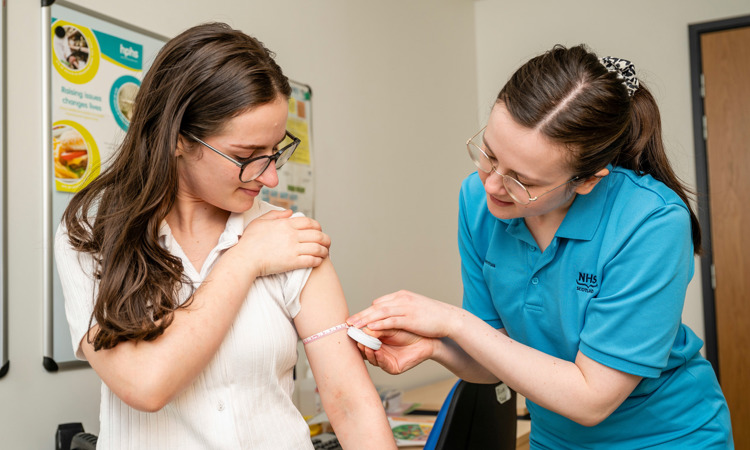How to become an ambulance care assistant
Apply for vacancies on our recruitment website to become an ambulance care assistant. There are no specific entry requirements, but the Scottish Ambulance Service will expect you to have a good standard of education. You'll also need a full UK driving licence, including category D1.
What is an ambulance care assistant?
Ambulance care assistants provide a non-emergency transport service. They take elderly, sick, and disabled people to and from hospital appointments, where medical or clinical support is needed during the journey.

Starting your career as an ambulance care assistant
Choosing subjects at school
To become an ambulance care assistant, you'll need a good standard of education. Useful subjects include:
- English
- Maths
Speak to your guidance teacher about subjects offered at your school.

Work placements and volunteering
You may find it helpful to get some healthcare experience by doing a work placement or volunteering. You’ll get training, increase your knowledge, and learn new skills. This could help you when applying to university, college or a new job with NHSScotland.
Training programme
You’ll be trained through an internal education programme that lasts approximately 4 months.
From your start date, you will be an employee of the Scottish Ambulance Service and enrolled in a 4-week clinical programme. This includes:
- classroom training
- advanced safe driving
Classroom training includes:
- moving and handling
- first aid
- using automated defibrillators
- managing conflict and difficult situations
- patient care
- patient care for priority groups, such as cancer, cardiology, and mental health patients
- health and safety
You'll gain a Certificate for Ambulance Patient Care: Non-Urgent Care Services when you complete the programme.
Get to know the role
Working in the ambulance transport team, you'll provide high-quality care and safe transportation for non-emergency patients. You’ll drive patients from home to hospital for clinical appointments or between hospitals when a different level of care is needed.
You’ll also provide additional support during major incidents or large public events.
Your main tasks include:
- transporting patients to appointments safely, comfortably, and on time
- daily equipment checks
- use appropriate moving and handling techniques when moving patients under non-emergency conditions
liaising with control, responding to instructions, and providing location or status updates - completing accurate patient journey records
You’ll also need to have a good geographical knowledge of your work area and be able to use GPS systems to navigate safely.
You’ll need these skills:
- caring for people
- communicating
- decision-making
- listening
- relationship-building
- teamwork
You could work with:
- scheduled care co-ordinators
- other ambulance care assistants
You'd be based in an ambulance station. If you're in a 2-person team, you might use an adapted ambulance with a tail lift for wheelchairs. If you're working alone, you might use a standard car.
Learning and development
During your career, you must keep your skills and knowledge up to date. The Scottish Ambulance Service will provide training specific to your role.
Career progression
With experience and training, you could become a team leader or supervisor and qualify as a patient transport services controller.
You may decide to apply for an accident and emergency role, such as an ambulance technician.

Explore careers
Discover the skills and qualifications you’ll need for each role and what the work will be like.
Explore careers
Help with recruitment
We'll guide you through the recruitment process, from applying online to interview preparation.
Help with recruitment